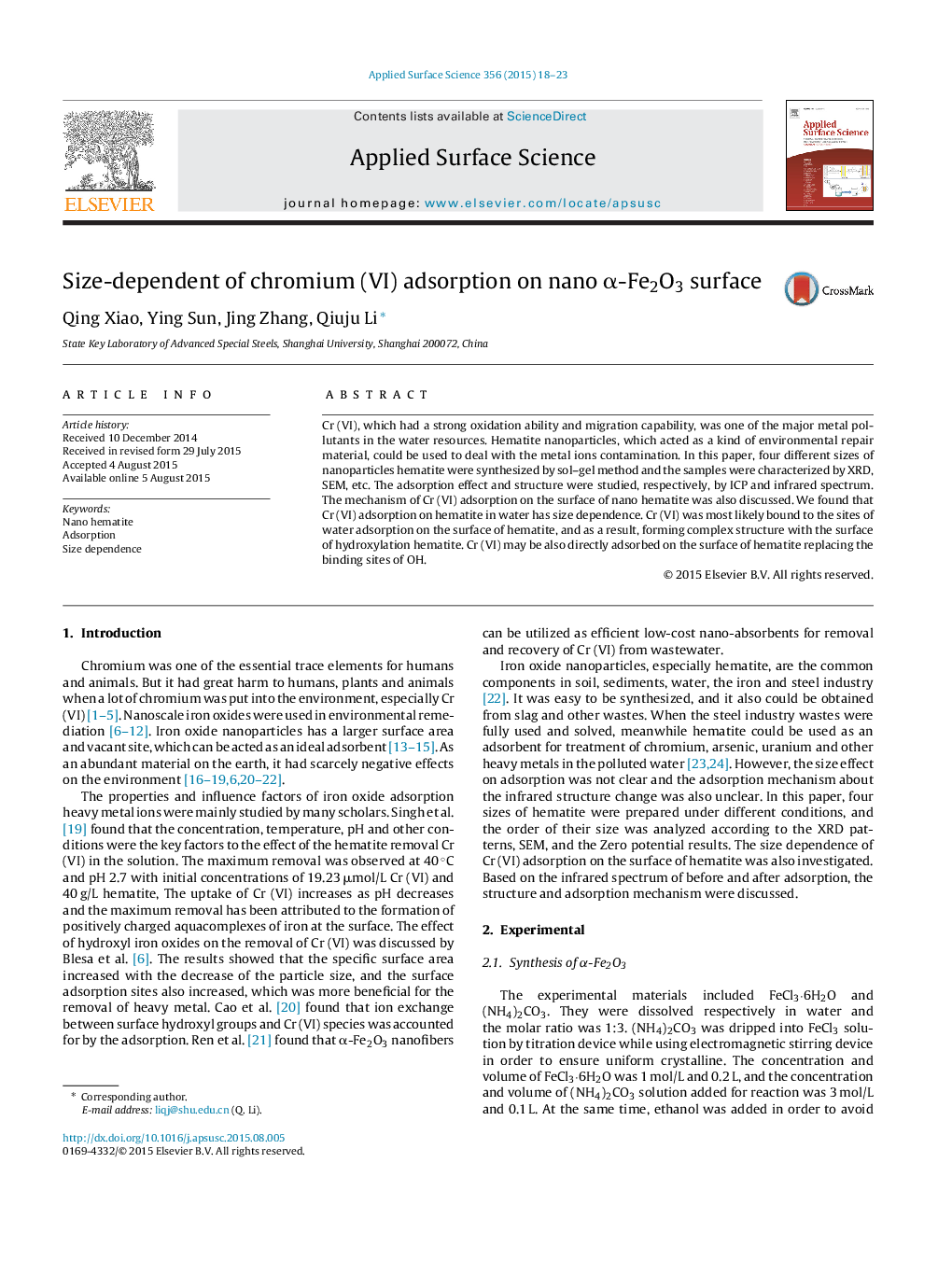| Article ID | Journal | Published Year | Pages | File Type |
|---|---|---|---|---|
| 5348890 | Applied Surface Science | 2015 | 6 Pages |
Abstract
Cr (VI), which had a strong oxidation ability and migration capability, was one of the major metal pollutants in the water resources. Hematite nanoparticles, which acted as a kind of environmental repair material, could be used to deal with the metal ions contamination. In this paper, four different sizes of nanoparticles hematite were synthesized by sol-gel method and the samples were characterized by XRD, SEM, etc. The adsorption effect and structure were studied, respectively, by ICP and infrared spectrum. The mechanism of Cr (VI) adsorption on the surface of nano hematite was also discussed. We found that Cr (VI) adsorption on hematite in water has size dependence. Cr (VI) was most likely bound to the sites of water adsorption on the surface of hematite, and as a result, forming complex structure with the surface of hydroxylation hematite. Cr (VI) may be also directly adsorbed on the surface of hematite replacing the binding sites of OH.
Keywords
Related Topics
Physical Sciences and Engineering
Chemistry
Physical and Theoretical Chemistry
Authors
Qing Xiao, Ying Sun, Jing Zhang, Qiuju Li,
